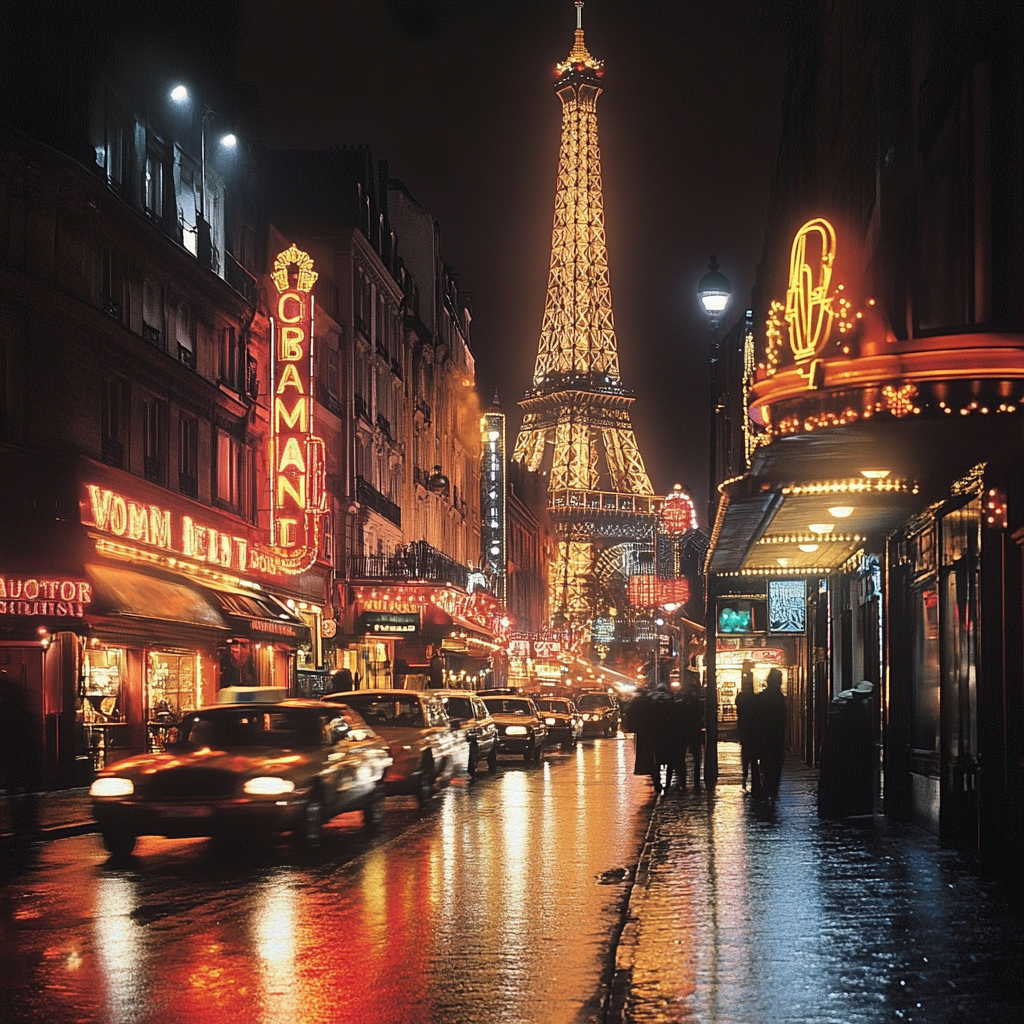French cancan is not just a dance, it is a symbol of French cabaret and one of the most striking manifestations of dance art. Originating in the mid-19th century, the cancan quickly won the hearts of audiences with its energy, audacity and unique choreographic elements. This dance has become a true embodiment of freedom and fun, associated with Parisian nightlife, especially with the legendary Moulin Rouge cabaret.
The origins of the French cancan: From balls to the cabaret stage
The cancan appeared in France in the 1830s as an element of entertaining dances at social balls. This dance originated in an era when France was striving for freedom and progress, and the cancan perfectly reflected this spirit. Initially, the cancan was part of the so-called quadrille balls, where young couples danced to the rhythm of fast, energetic movements. Gradually the dance became more provocative, with elements of acrobatics and a high level of difficulty.
The popularity of the cancan increased during the heyday of Parisian cabarets such as the Moulin Rouge, where the dance became one of the key elements of the show. Energy, courage and provocation made the cancan a symbol of the vibrant and free nightlife of Paris. Today, cancan is not only a historical heritage, but also a cultural phenomenon that remains relevant and in demand on modern stages.
Technique and elements of cancan: What makes the dance so bright and effective
Cancan is not only a spectacular dance, but also a complex choreographic structure that requires skill and physical fitness from the dancers. The main elements of the cancan include:
- High leg swings: Dancers raise their feet to head level, which is a signature element of the dance.
- Circular rotations: Acrobatic elements, where dancers spin around their axis, add dynamics and entertainment.
- Split jumps: Dancers perform sharp split jumps, which require flexibility and strength.
- Swinging skirts: During the dance, girls lift their full skirts, which gives the dance playfulness and slight provocativeness.
- Synchronicity: The cancan is usually performed in groups, and synchronization of movements plays a key role in creating a spectacular spectacle.
All these elements make the cancan an incredibly dynamic and spectacular dance that does not lose its relevance and still delights audiences around the world.
Moulin Rouge and cancan: Symbols of Parisian nightlife
Moulin Rouge is one of the most famous cabarets in the world, where the French cancan has become a real symbol. This establishment opened in 1889 in Montmartre and quickly became the center of Parisian nightlife. The energy, brightness and provocativeness of the cancan bohemian artists, writers and painters were attracted here. Dancers “Moulin Rouge” created the image of the cancan as a provocative and bewitching dance, which became an integral part of show programs.
The cancan at the Moulin Rouge has become synonymous with the free spirit of Paris. The numbers performed on this stage combined elegance and audacity, delighting the audience. Thanks to the Moulin Rouge, the cancan gained worldwide fame and became associated not only with France, but also with the international cabaret culture. Today, this dance continues on cabaret stages around the world, remaining a symbol of French nightlife and entertainment.
The global popularity of cancan: How the dance conquered stages around the world
Cancan, which began as a local entertainment on the Paris stage, quickly spread throughout the world thanks to its energy and entertainment. French artists began to tour Europe and America, demonstrating this incredible dance outside of France. By the beginning of the 20th century, the cancan was already performed on the stages of London, New York and Berlin, becoming an important element of cabaret shows in these cities.
The popularity of the cancan is explained by its versatility and emotional richness. High jumps, acrobatic elements and synchronization make it one of the most impressive dances. Cancan dance routines continue to attract audiences regardless of country or cultural context. This is why cancan remains an important part of both the historical heritage and the modern dance scene.
Creating dance masterpieces: How choreographers and dancers prepare a cancan show
Creating cancan dance routines is a complex process that requires choreographers to have a deep understanding of the technique and history of the dance. Each cancan show begins with the development of choreography, which includes both classical dance elements and modern interpretations. Choreographers strive to preserve traditions and energy, adding new acrobatic stunts and synchronized moves to wow audiences.
Cancan dancers also undergo extensive physical training, as the dance requires endurance, flexibility and strength. They hone the technique of performing swings, jumps and splits to make the performance as spectacular as possible. Rehearsals can last several months, because synchronization and precision of movements play an important role in creating real dance masterpieces. It is thanks to the efforts of choreographers and dancers that the cancan continues to delight and surprise audiences around the world.
The French cancan is a vibrant symbol of freedom, audacity and French cabaret. He has come a long way from Parisian balls to world stages, winning the hearts of audiences with his unique choreography and energy. Creating cancan dance masterpieces requires skill, hard work and a deep understanding of tradition. But the result is a show that gives viewers unforgettable emotions and continues to inspire new generations of artists.
Cancan combines brightness, dynamics and elements of acrobatics, which makes it a spectacular and memorable dance. His energy and audacity cannot be ignored, and this attracts both artists and audiences.
Classic cancan moves include high leg kicks, split jumps, gyrations and skirt swings. All these movements create unique dynamics and entertainment that make the cancan so recognizable

